#matilda of scotland
Photo

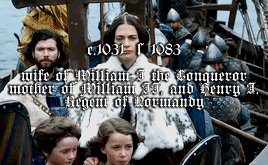
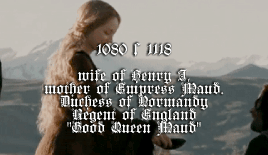
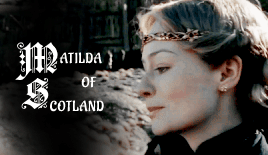

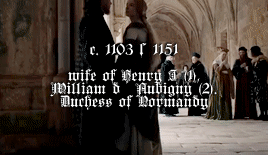
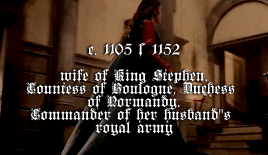
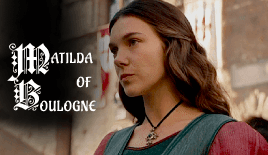


— House of Normandy: QUEENS ♕
#historyedit#matilda of flanders#matilda of scotland#adeliza of louvain#matilda of boulogne#empress matilda#empress maud#history#perioddramaedit#periodedits#gifshistorical#onlyperioddramas#perioddramasource#women in history#english history#fancast#userperioddrama#userbennet#duchessofhastings#my edit
348 notes
·
View notes
Text
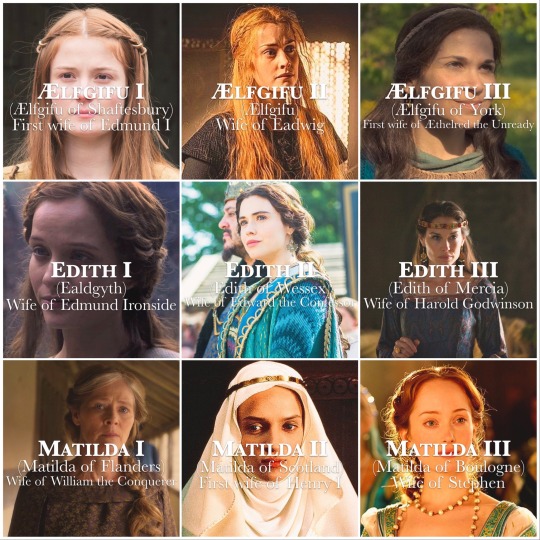



If the English and British consorts had regnal numbers
#i decided not to include the ones where there’s only one consort with that name#since they wouldn’t have a number#Ælfgifu of shaftesbury#Ælfgifu#Ælfgifu of york#ealdgyth#edith of wessex#edith of mercia#matilda of flanders#matilda of scotland#matilda of boulogne#eleanor of aquitaine#isabella of angoulême#eleanor of provence#eleanor of castile#margaret of france#isabella of france#anne of bohemia#isabella of valois#catherine of valois#margaret of anjou#elizabeth woodville#anne neville#elizabeth of york#catherine of aragon#anne boleyn#anne of cleves#katherine howard#katherine parr#phillip ii
135 notes
·
View notes
Text
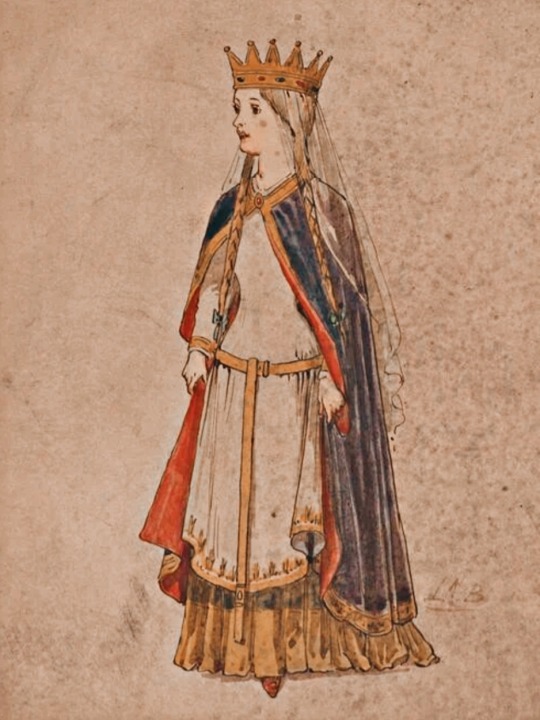
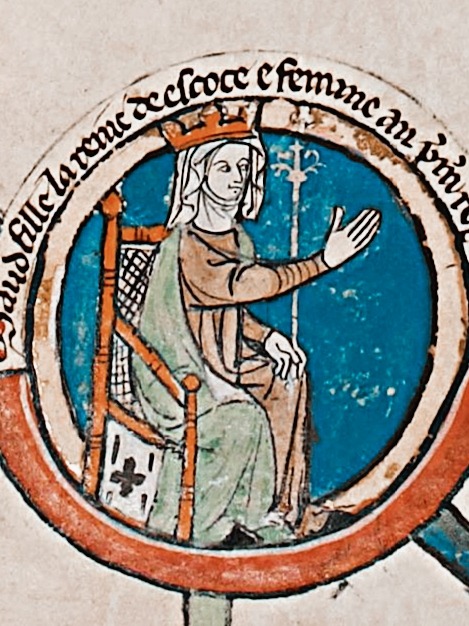
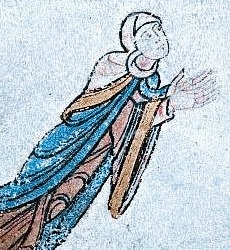
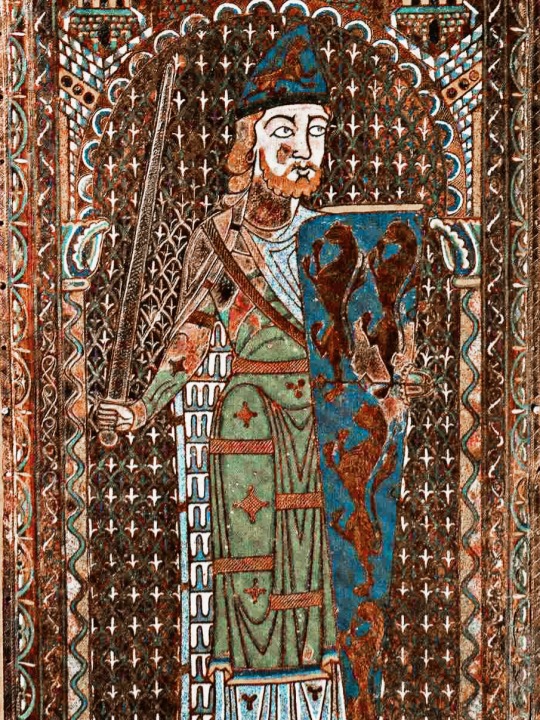
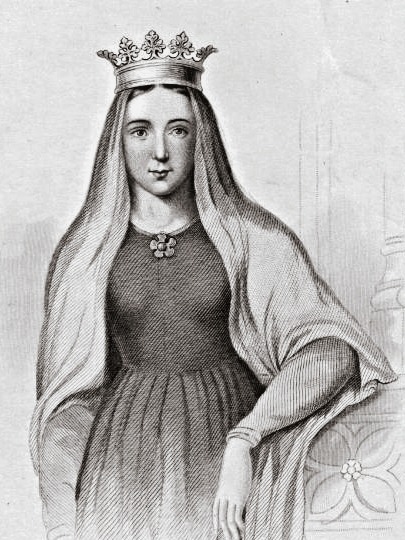



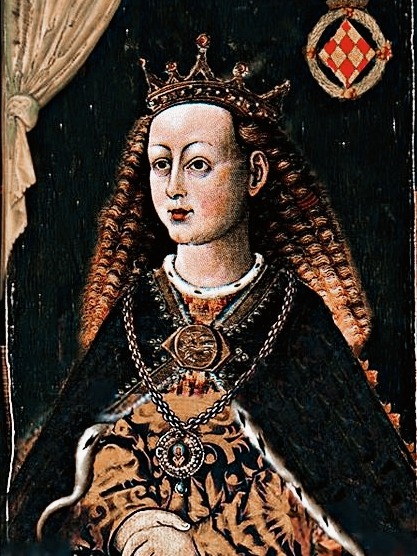
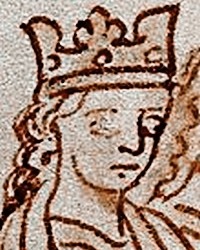
CONSORTS OF ENGLAND SINCE THE NORMAN INVASION (1/5) ♚
Matilda of Flanders (December 1066 - November 1083)
Matilda of Scotland (November 1100 - May 1118)
Adeliza of Louvain (January 1121 - December 1135)
Geoffrey V of Angou (April 1141 - 1148)
Matilda of Boulogne (December 1135 - May 1152)
Eleanor of Aquitaine (December 1154 - July 1189)
Margaret of France (1170 - June 1183)
Berengaria of Navarre (May 1191 - April 1199)
Isabella of Angoulême (August 1200 - October 1216)
Eleanor of Provence (January 1236 - November 1272)
#my photoset.#royal edit#history#historyedit#matilda of scotland#matilda of flanders#adeliza of louvain#geoffrey v#eleanor of aquitaine#margaret of france#berengaria of navarre#isabella of angouleme#eleanor of provence#british royal family#british royals#royals#royal#queens#historical royals#medieval ages#british royalty#historical royalty#consorts of england since norman invasion#english history#plantagenets#house of normandy#house of blois#plantagenet dynasty#consorts of england since norman invasion edit#consorts of england and britiain.
67 notes
·
View notes
Text
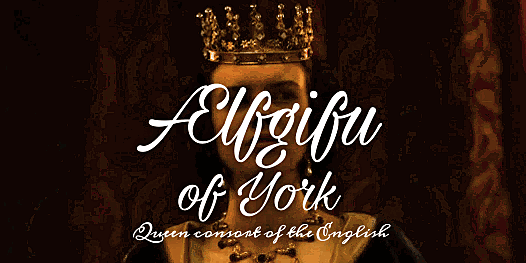
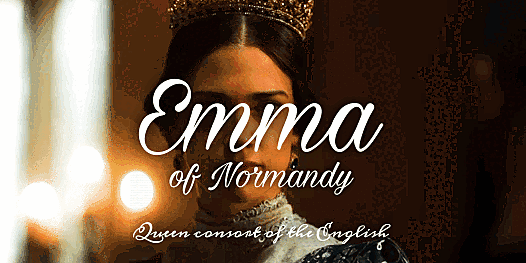
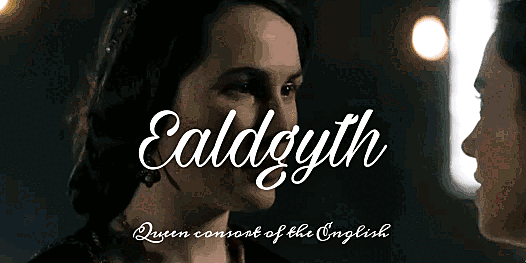

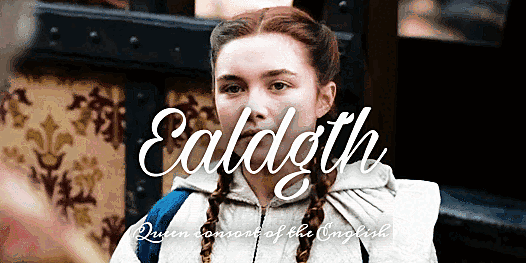

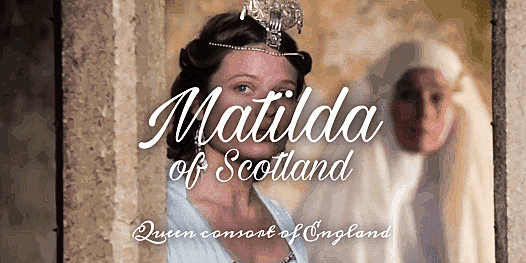
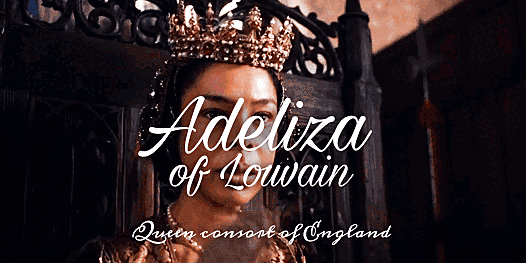
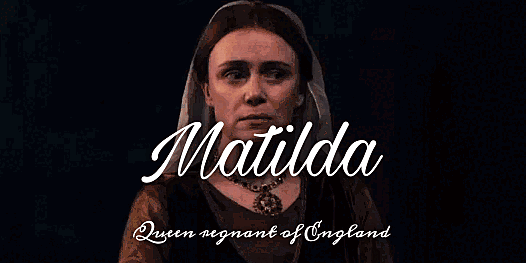
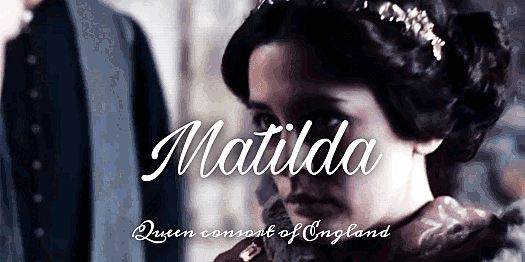
The Queens of England (2/7)
Queen consorts and queen regnants of England from 856 to present day
#aelfgifu of york#emma of normandy#ealdgyth#edith of wessex#matilda of flanders#matilda of scotland#adeliza of louvain#empress matilda#historical women#gif#gifset#british history
87 notes
·
View notes
Photo

There's only two Sam Kerrs
🏴🤝🇦🇺
71 notes
·
View notes
Text

ScotlandNT There's only two Sam Kerrs
🏴🤝🇦🇺
13 notes
·
View notes
Text

Scrooge McDuck and his sisters at their parents' graveyard.
Although I'm already late, I'm definitely posting this on the occasion of All Souls' Day, that is, Remembrance Day, which honors the memory of deceased persons at the beginning of November. Yes, a lot of people died this year, both famous and unknown, and I don't have enough time to pay tribute to all of them, certainly eternal glory to them and may they rest in peace. Amen.
I did a redraw from last year where Scrooge mourns his parents (more about this there: https://www.tumblr.com/ducktoonsfanart/678109418403086336/i-miss-you-mcpapa-and-mcmama-scrooge-mcduck ), but I tweaked my style a bit and added his sisters, Matilda and Hortense who mourn their parents Fergus McDuck and Downy McDuck (née O' Drake). Yes buried at the McDuck Clan family castle in Scotland. Otherwise drawn as if they were living in the time of the 1920s era when Scrooge reached his greatest wealth and when he still had a good relationship with his sisters before he fell out with them. I definitely took inspiration from Don Rosa comics and his collection called "The Life and Times of Scrooge McDuck". The parents of Scrooge, Fergus and Downy look down from another world (probably from heaven) on their children and are glad for what they have achieved in their lives. Scrooge achieved his fortune, Matilda married scientist Ludwig von Drake and Hortense married Quackmore of the famous Duck family. However, it is sad that they are no longer in this world and will be missed by their children, until their children reach a very old age and go to them in the other world. But it depends on the Creator what will happen.
Yes, I drew them wearing black clothes, because black clothes are usually worn at funerals and when visiting a cemetery.
All in all, may their souls rest in peace as well as all the people who died from the beginning of November last year until now. Eternal glory to them and peace to their souls! Rest in peace! Amen.
#my fanart#scrooge mcduck#all souls' day#matilda mcduck#hortense mcduck#hortense duck#fergus mcduck#duckverse#ducktales#disney duck comics#duck comics#downy o'drake#downy mcduck#scrooge's family#mcduck clan#scotland#mcduck castle#graveyard#disney ducks#disney duckverse#the life and times of scrooge mcduck#disney comics#comics#scrooge's parents#scrooge's sisters#fergus and downy's children#fanart#tribute#rest in peace#amen
19 notes
·
View notes
Text
Harry's house is a fucking masterpiece and you CANNOT change my mind.
I'm crying over little freak
#I haven't forgotten about as it was#its still my baby#I will be listening to it after matilda#harry I would like to be in your house#and play Scotland Yard with you while we both listen to this masterpiece that you created#harrys house#matilda#as it was#grapejuice#late night talking is a vibe though#harry styles#harry edward styles#hs3#hs3 era#music for a sushi restaurant
1 note
·
View note
Text
LGBT+ Victorians
Since it's Pride Month and Dracula Daily is going to be pretty quiet for most of June, I thought it might be good timing for a little 1890s queer history. Plus I wanted to give a bit more fuel to everyone's queer headcanons for Dracula characters!
Popping this under a cut because it's long.
The start of queer identity
This is a massive generalisation, but for most of British history, being queer was about action and not about identity. The idea that people who wanted to have gay sex belonged to a specific group that was different to other people didn't exist for the most part, at least not at a societal level. (This was also true - more generalisation - for much of the western world. It was very much not true for large swathes of the rest of the world who thought about this in entirely different and varied ways).

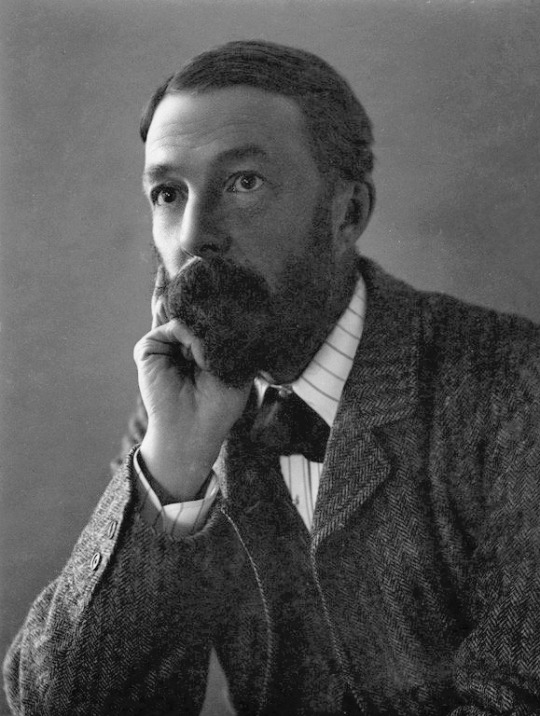
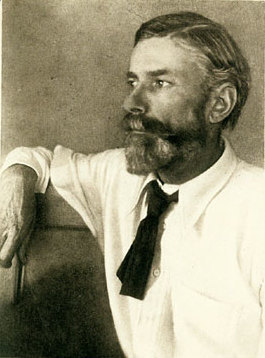
By the second half of the 19th century, that was starting to change. People like Karl Heinrich Ulrichs in Germany (on the left), and John Addington Symonds (middle) and Edward Carpenter (right) in the UK started to think of themselves as homosexuals - Ulrichs coined the term "Urning" which became "Uranian" in English. This period marked the beginning of organised campaigning for LGBT rights in the UK, though specific campaigning for lesbian and trans rights came later.
This means that in the 1890s setting of Dracula, any characters might think of themselves as "Uranian" or "Sapphic", or they might not yet have picked up that way of thinking. At a guess I'd expect Seward or van Helsing to be particularly aware of the new theory around homosexuality.
LGBT rights in law
It was a mixed time for the legal position of LGBT people. The death penalty for sodomy was abolished in 1861 in England, Wales and Ireland (1889 in Scotland), and replaced with minimum 10 years hard labour. In 1871, two amab people, Boulton and Park, were tried for dressing as women, but the judge ruled that this was not an offence under English law (though he also said that he thought it should be).
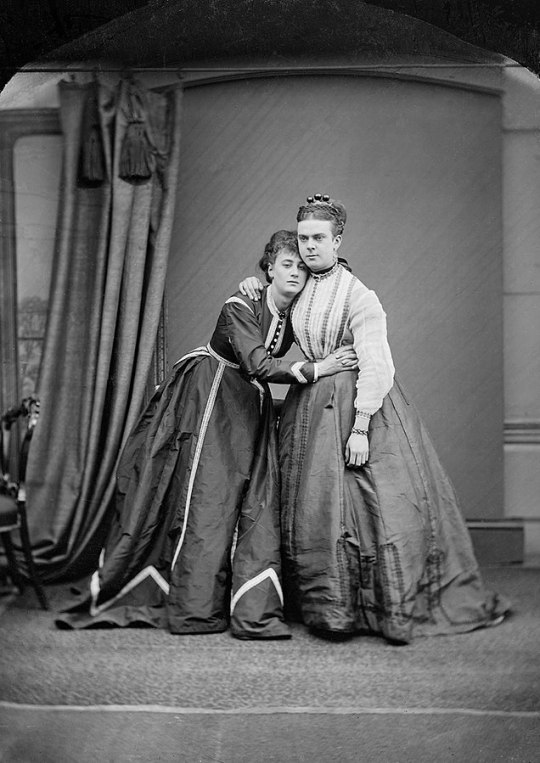
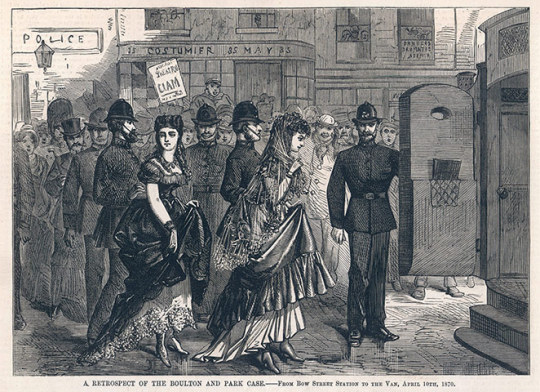
On the left: Fanny Park and Stella Boulton; on the right, the Illustrated Police News' depiction of their arrest.
And in 1885, the Criminal Law Amendment Act reduced the minimum sentence for gross indecency from 10 years' hard labour to two.
That said, before that act was introduced, there had to be a witness to any sodomy or gross indecency for it to be prosecuted. The Criminal Law Amendment Act changed that, so all private acts, arguably even love letters, could be prosecuted. So despite the reduction in sentences, this change to the law made life harder for queer men in the 1880s and 1890s. From a Dracula perspective, this means that people would be much more careful about what they wrote down - significant for a novel made up of documents.
Lesbian sex has never been illegal in the UK. (The idea that this was because Queen Victoria didn't believe in lesbianism is a myth). But in the 18th century there were a series of prosecutions of afab people who lived as men and married women. They were prosecuted for fraud when their birth sex was discovered, because they were perceived as having defrauded their wives. There were far fewer such prosecutions in the 19th century, possibly because of the belief that it was better not to create the publicity of a trial.
Victorian WLW
There are HEAPS of notable Victorian lesbians and bisexual women, including a lot in the suffragette movement. So I've chosen a few examples based on there being good images on Wikipedia.
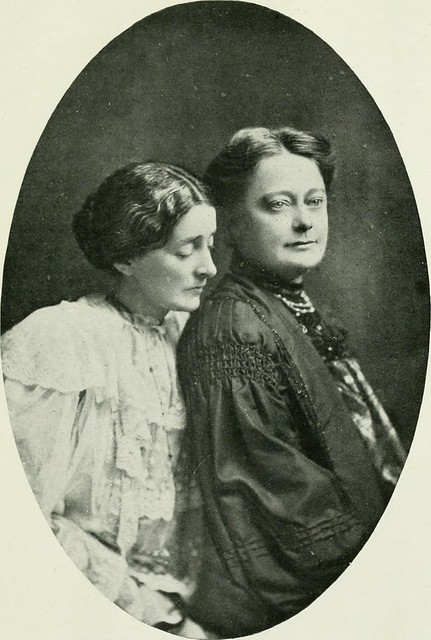


From left to right:
Margaret Benson and Janet (Nettie) Gourlay were Egyptologists who met at the excavation of the Precinct of Mut. Almost all of Benson's family preferred same-sex relationships.
Louisa Baring, Lady Ashburton, was briefly married to a man, but when she was widowed, began a 25-year relationship with American sculptor Harriet Hosmer. Harriet described herself as Louisa's "hubby".
Matilda Hays was a mixed-race writer and actress who had a relationship with American actress Charlotte Cushman, with whom she's pictured. Hays aimed to use her writing to improve the condition of women.
Victorian MLM
Again, I've chosen people to highlight through the very representative method of good photos.
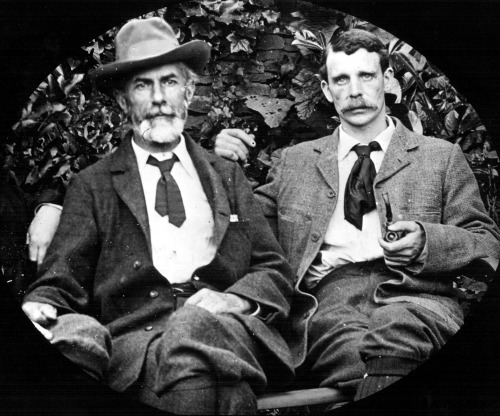
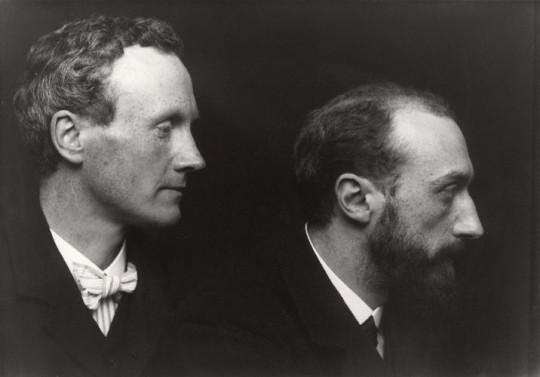

From left to right:
Edward Carpenter was a socialist, poet, philosopher and early gay rights activist who met his partner George Merrill on a train. The two men came from very different backgrounds: Carpenter from privilege, and Merrill from the Sheffield slums. Their 40-year relationship inspired the ending of EM Forster's novel Maurice.
Charles Ricketts and Charles Haslewood Shannon were artists who met as teenagers and lived together for more than 50 years. In the Times' obituary for Ricketts in 1931, their relationship was described as being "as remarkable as any of the great historic friendships, or the finest Darby and Joan examples of wedded felicity".
Ned Warren and John Marshall were art collectors who together were largely responsible for the Roman and Greek Art Collection of the Boston Museum of Fine Arts and the Metropolitan Museum of Art. Marshall married Warren's cousin, Mary Bliss, but only on the condition that the marriage would not be consummated. All three lived together until they died and were buried in the same tomb.
Trans Victorians
I wrote last year about Dr James Barry, a Victorian trans man, in the context of whether Jack Seward could be trans. (The post is from October, but spoiler free).
Eliza Edwards was an actress who died in 1833 at the age of 24. Her body was autopsied, and discovered to be - in the words of the autopsy - "a perfect man", which had apparently not been known to any of her friends or colleagues.
Harry Stokes was a bricklayer in Manchester, who was outed as trans in newspaper articles during his divorce 1838 and again after his death in 1859. He became something of a figure of fun after being first outed, but met another woman who lived with him as his life, and was broadly accepted by the local community as a trans man.
It was only through chance that James, Eliza and Harry were outed (and in James Barry's case, despite considerable efforts on his part). There might well have been hundreds or thousands more people like them.
And Boulton and Park, who I mentioned above, have usually been treated as transvestite men by historians, but could equally - had they had the terms themselves - be identified as trans women. Some contemporary newspaper articles even used she/her pronouns for them.
Asexual Victorians
Asexuality is tricky to spot in history, though even in 1896, German sexologist Magnus Hirschfeld was identifying it as a distinct phenomenon. What we do know is that more than 10% of women and a little under 10% of men in the 1890s never married, and in some cases that may well have been because they were asexual or aromantic.
From a Dracula perspective, family rumour held that Florence Stoker declined sex with her husband after the birth of their child. That may or may not have been true (and there's a ring of aphobia to some of the family's claims) but it shows how asexual people might also be found in apparently conventional marriages.
Sources
British Library: A Short History of LGBT Rights in the UK
British Library: A timeline of LGBT communities in the UK
Girlfriends of Dorothy: A Timeline of Lesbian Rights UK 1601 - 2020s (note: the site intends to be trans-inclusive, but genders John Barry as female.)
Open University: Lesbianism and the criminal law of England and Wales
“Constant Companions” and “Intimate Friends”: The Lives and Careers of Maggie Benson and Nettie Gourlay
Sapphic sexuality: lesbian myth and reality in art and sculpture
British Library: Transgender identities in the past
Warp and Weft: The extraordinary life of Harry Stokes
British Academy: Happy Families?
Coitus Interruptus: Sex, Bram Stoker, and Dracula
'Missing person' Florence Stoker added to DIB
750 notes
·
View notes
Text
Below the cut I have made a list of each English and British monarch, the age of their mothers at their births, and which number pregnancy they were the result of. Particularly before the early modern era, the perception of Queens and childbearing is quite skewed, which prompted me to make this list. I started with William I as the Anglo-Saxon kings didn’t have enough information for this list.
House of Normandy
William I (b. c.1028)
Son of Herleva (b. c.1003)
First pregnancy.
Approx age 25 at birth.
William II (b. c.1057/60)
Son of Matilda of Flanders (b. c.1031)
Third pregnancy at minimum, although exact birth order is unclear.
Approx age 26/29 at birth.
Henry I (b. c.1068)
Son of Matilda of Flanders (b. c.1031)
Fourth pregnancy at minimum, more likely eighth or ninth, although exact birth order is unclear.
Approx age 37 at birth.
Matilda (b. 7 Feb 1102)
Daughter of Matilda of Scotland (b. c.1080)
First pregnancy, possibly second.
Approx age 22 at birth.
Stephen (b. c.1092/6)
Son of Adela of Normandy (b. c.1067)
Fifth pregnancy, although exact birth order is uncertain.
Approx age 25/29 at birth.
Henry II (b. 5 Mar 1133)
Son of Empress Matilda (b. 7 Feb 1102)
First pregnancy.
Age 31 at birth.
Richard I (b. 8 Sep 1157)
Son of Eleanor of Aquitaine (b. c.1122)
Sixth pregnancy.
Approx age 35 at birth.
John (b. 24 Dec 1166)
Son of Eleanor of Aquitaine (b. c.1122)
Tenth pregnancy.
Approx age 44 at birth.
House of Plantagenet
Henry III (b. 1 Oct 1207)
Son of Isabella of Angoulême (b. c.1186/88)
First pregnancy.
Approx age 19/21 at birth.
Edward I (b. 17 Jun 1239)
Son of Eleanor of Provence (b. c.1223)
First pregnancy.
Age approx 16 at birth.
Edward II (b. 25 Apr 1284)
Son of Eleanor of Castile (b. c.1241)
Sixteenth pregnancy.
Approx age 43 at birth.
Edward III (b. 13 Nov 1312)
Son of Isabella of France (b. c.1295)
First pregnancy.
Approx age 17 at birth.
Richard II (b. 6 Jan 1367)
Son of Joan of Kent (b. 29 Sep 1326/7)
Seventh pregnancy.
Approx age 39/40 at birth.
House of Lancaster
Henry IV (b. c.Apr 1367)
Son of Blanche of Lancaster (b. 25 Mar 1342)
Sixth pregnancy.
Approx age 25 at birth.
Henry V (b. 16 Sep 1386)
Son of Mary de Bohun (b. c.1369/70)
First pregnancy.
Approx age 16/17 at birth.
Henry VI (b. 6 Dec 1421)
Son of Catherine of Valois (b. 27 Oct 1401)
First pregnancy.
Age 20 at birth.
House of York
Edward IV (b. 28 Apr 1442)
Son of Cecily Neville (b. 3 May 1415)
Third pregnancy.
Age 26 at birth.
Edward V (b. 2 Nov 1470)
Son of Elizabeth Woodville (b. c.1437)
Sixth pregnancy.
Approx age 33 at birth.
Richard III (b. 2 Oct 1452)
Son of Cecily Neville (b. 3 May 1415)
Eleventh pregnancy.
Age 37 at birth.
House of Tudor
Henry VII (b. 28 Jan 1457)
Son of Margaret Beaufort (b. 31 May 1443)
First pregnancy.
Age 13 at birth.
Henry VIII (b. 28 Jun 1491)
Son of Elizabeth of York (b. 11 Feb 1466)
Third pregnancy.
Age 25 at birth.
Edward VI (b. 12 Oct 1537)
Son of Jane Seymour (b. c.1509)
First pregnancy.
Approx age 28 at birth.
Jane (b. c.1537)
Daughter of Frances Brandon (b. 16 Jul 1517)
Third pregnancy.
Approx age 20 at birth.
Mary I (b. 18 Feb 1516)
Daughter of Catherine of Aragon (b. 16 Dec 1485)
Fifth pregnancy.
Age 30 at birth.
Elizabeth I (b. 7 Sep 1533)
Daughter of Anne Boleyn (b. c.1501/7)
First pregnancy.
Approx age 26/32 at birth.
House of Stuart
James I (b. 19 Jun 1566)
Son of Mary I of Scotland (b. 8 Dec 1542)
First pregnancy.
Age 23 at birth.
Charles I (b. 19 Nov 1600)
Son of Anne of Denmark (b. 12 Dec 1574)
Fifth pregnancy.
Age 25 at birth.
Charles II (b. 29 May 1630)
Son of Henrietta Maria of France (b. 25 Nov 1609)
Second pregnancy.
Age 20 at birth.
James II (14 Oct 1633)
Son of Henrietta Maria of France (b. 25 Nov 1609)
Fourth pregnancy.
Age 23 at birth.
William III (b. 4 Nov 1650)
Son of Mary, Princess Royal (b. 4 Nov 1631)
Second pregnancy.
Age 19 at birth.
Mary II (b. 30 Apr 1662)
Daughter of Anne Hyde (b. 12 Mar 1637)
Second pregnancy.
Age 25 at birth.
Anne (b. 6 Feb 1665)
Daughter of Anne Hyde (b. 12 Mar 1637)
Fourth pregnancy.
Age 27 at birth.
House of Hanover
George I (b. 28 May 1660)
Son of Sophia of the Palatinate (b. 14 Oct 1630)
First pregnancy.
Age 30 at birth.
George II (b. 9 Nov 1683)
Son of Sophia Dorothea of Celle (b. 15 Sep 1666)
First pregnancy.
Age 17 at birth.
George III (b. 4 Jun 1738)
Son of Augusta of Saxe-Gotha (b. 30 Nov 1719)
Second pregnancy.
Age 18 at birth.
George IV (b. 12 Aug 1762)
Son of Charlotte of Mecklenburg-Strelitz (b. 19 May 1744)
First pregnancy.
Age 18 at birth.
William IV (b. 21 Aug 1765)
Son of Charlotte of Mecklenburg-Strelitz (b. 19 May 1744)
Third pregnancy.
Age 21 at birth.
Victoria (b. 24 May 1819)
Daughter of Victoria of Saxe-Coburg-Saafield (b. 17 Aug 1786)
Third pregnancy.
Age 32 at birth.
Edward VII (b. 9 Nov 1841)
Daughter of Victoria of the United Kingdom (b. 24 May 1819)
Second pregnancy.
Age 22 at birth.
House of Windsor
George V (b. 3 Jun 1865)
Son of Alexandra of Denmark (b. 1 Dec 1844)
Second pregnancy.
Age 20 at birth.
Edward VIII (b. 23 Jun 1894)
Son of Mary of Teck (b. 26 May 1867)
First pregnancy.
Age 27 at birth.
George VI (b. 14 Dec 1895)
Son of Mary of Teck (b. 26 May 1867)
Second pregnancy.
Age 28 at birth.
Elizabeth II (b. 21 Apr 1926)
Daughter of Elizabeth Bowes-Lyon (b. 4 Aug 1900)
First pregnancy.
Age 25 at birth.
Charles III (b. 14 Nov 1948)
Son of Elizabeth II of the United Kingdom (b. 21 Apr 1926)
First pregnancy.
Age 22 at birth.
364 notes
·
View notes
Text
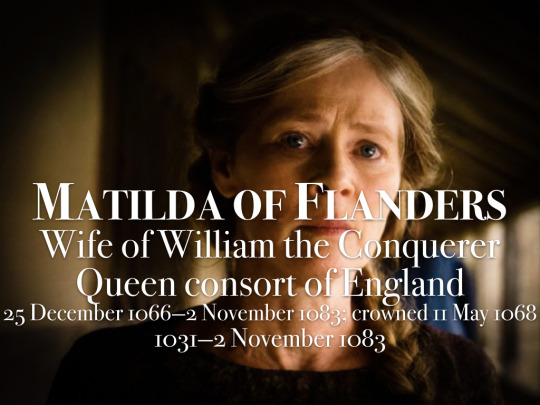


Consorts of England and Britain
House of Normandy
4 notes
·
View notes
Text
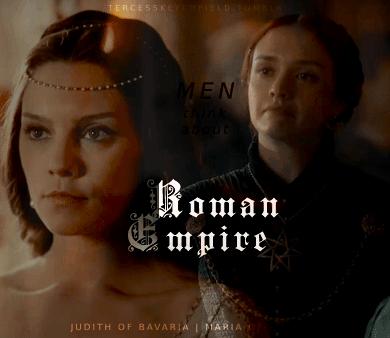
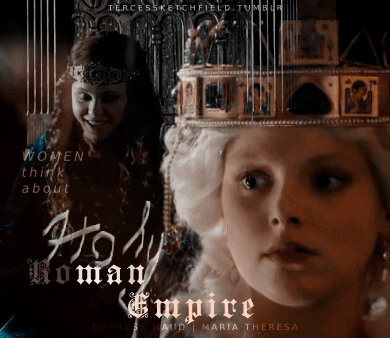
MEN THINK ABOUT ROMAN EMPIRE. WOMEN THINK ABOUT HOLY ROMAN EMPIRE
JUDITH OF BAVARIA (797-843) — Daughter of Count Welf I of Bavaria, Judith was a Carolingian Empress as the second wife of Louis I the Pious. Mother of Gisela and Charles the Bald, she foght for both her own influence at court and for the succession of her son over the claims of his elder half-brothers, the sons of Louis I from his first marriage. Charles became the Emperor in 875, after the death of Louis II, his nephew and a son of his half-brother Lothair / fancast: Annabel Scholey
MARIA OF AUSTRIA (1528-1603) — Daughter of Charles V, Holy Roman Emperor, and Isabella of Portugal. She served as Regent of Spain both jointly with her husband, Maximilian (before their accession to the imperial throne), and in person, for her father, and brother, Philip II. Her children include two Holy Roman Emperors, Rudolf II and Matthias, over whom she held great influence, and queens consorts of Spain, and France / fancast: Olivia Cooke
EMPRESS MAUD (1102-1167) — Daughter of Henry I of England and Matilda of Scotland. Her first marriage to the Holy Roman Emperor, Henry V, gave her the title under which she came down into history, and was a source of great pride to Maud. Rightful heiress of Henry I, she confronted her cousin, King Stephen, in the civil war, known as the Anarchy, fighting ferociously for her rights. She failed in this for herself but won for her son Henry, who became king and established the Plantagenet dynasty in England / cast: Alison Pill in The Pillars of the Earth (2010)
MARIA THERESA (1717-1780) — She succeded her father Charles VI as the ruler of Habsburg monarchy in 1740, and devoutedly defended it against its enemies in the War of Austrian Succession and the Seven Year's War. Wife of the Holy Roman Emperor, Francis I, she was a forceful personality and a competent ruler herself, reigning first in her own right, and later, jointly with her son Empreror Joseph II. Her children include two Holy Romam Emperors (Joseph II and Leopold II), queens consorts of Naples ans Sicily, and France / cast: Marie-Luise Stockinger in Maria Theresia (2017)
#historyedit#judith of bavaria#maria of austria#empress maud#empress matilda#maria theresa#maria theresia#perioddramaedit#history#women in history#perioddramasource#onlyperioddramas#tusereliza#userbennet#usermina#weloveperioddrama#cortegiania#perioddramagif#gifshistorical#my edit#*i have literally zero idea what is this lmao* but i really like it idk
113 notes
·
View notes
Text
I'm gonna do it. I'm literally gonna pit bad bitches against each other.
Most Girlboss™ moments:
Matilda: Fought her cousin Stephen for the throne for fifteen years; escaped imprisonment by dressing in white to blend in with the snow, later imprisoning Stephen himself
Eleanor: Left her husband, the king of France, for being too weak [citation needed] to marry the future King of England, a man eleven years her junior, later rebels against him for being too weak [citation needed]
Isabella: Forcing her husband, Edward II, to abdicate for putting his boyfriends in positions of power, so that she could put HER boyfriend in a position of power
Margaret: Defended her husband's throne personally when he was too mentally ill to do it himself, commanding armies in the Wars of the Roses
Katherine: Acted as Regent for Henry VIII, overseeing a war with Scotland that ended with the death of their king; refused to relinquish her title of queen until her death
Anne: Refused to become the mistress of Henry VIII, holding out to be his queen instead, precipitating and influencing the Protestant Reformation
Mary: Won a rebellion after being excluded from the line of succession, becoming the first English queen regnant to successfully hold the throne
Elizabeth: Survived bastardry and imprisonment to ascend the throne; refused to marry, maintaining absolute agency amd control over a bountiful forty+ year reign




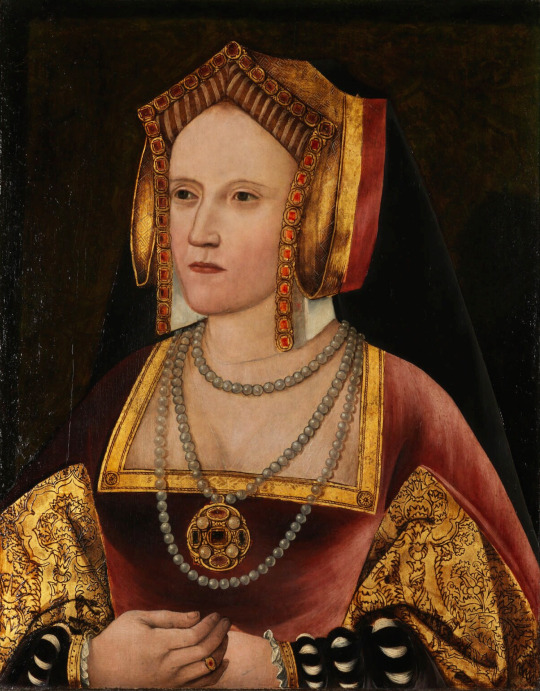

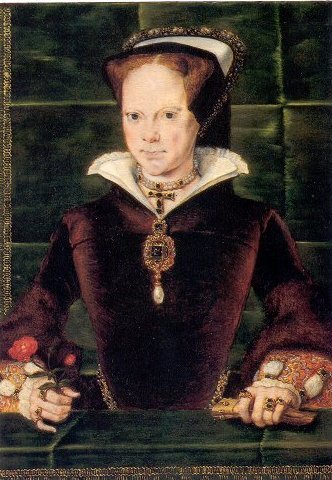
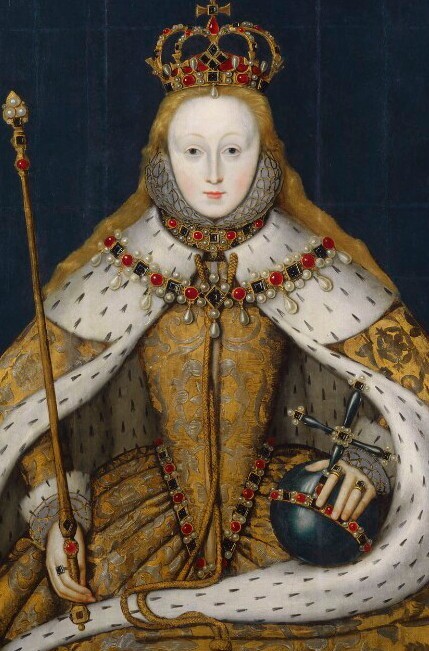
#my icon gives my choice away a bit#but if you say Elizabeth it's hard to argue#note that it's not best or nicest or most successful queen#it is Most Girlboss™#tudors#plantagenets#badass ladies
344 notes
·
View notes
Text
Ages of English Queens at First Marriage
I have only included women whose birth dates and dates of marriage are known within at least 1-2 years, therefore, this is not a comprehensive list. For this reason, women such as Philippa of Hainault and Anne Boleyn have been omitted.
This list is composed of Queens of England when it was a sovereign state, prior to the Acts of Union in 1707. Using the youngest possible age for each woman, the average age at first marriage was 17.
Eadgifu (Edgiva/Ediva) of Kent, third and final wife of Edward the Elder: age 17 when she married in 919 CE
Ælfthryth (Alfrida/Elfrida), second wife of Edgar the Peaceful: age 19/20 when she married in 964/965 CE
Emma of Normandy, second wife of Æthelred the Unready: age 18 when she married in 1002 CE
Ælfgifu of Northampton, first wife of Cnut the Great: age 23/24 when she married in 1013/1014 CE
Edith of Wessex, wife of Edward the Confessor: age 20 when she married in 1045 CE
Matilda of Flanders, wife of William the Conqueror: age 20/21 when she married in 1031/1032 CE
Matilda of Scotland, first wife of Henry I: age 20 when she married in 1100 CE
Adeliza of Louvain, second wife of Henry I: age 18 when she married in 1121 CE
Matilda of Boulogne, wife of Stephen: age 20 when she married in 1125 CE
Empress Matilda, wife of Henry V, HRE, and later Geoffrey V of Anjou: age 12 when she married Henry in 1114 CE
Eleanor of Aquitaine, first wife of Louis VII of France and later Henry II of England: age 15 when she married Louis in 1137 CE
Isabella of Gloucester, first wife of John Lackland: age 15/16 when she married John in 1189 CE
Isabella of Angoulême, second wife of John Lackland: between the ages of 12-14 when she married John in 1200 CE
Eleanor of Provence, wife of Henry III: age 13 when she married Henry in 1236 CE
Eleanor of Castile, first wife of Edward I: age 13 when she married Edward in 1254 CE
Margaret of France, second wife of Edward I: age 20 when she married Edward in 1299 CE
Isabella of France, wife of Edward II: age 13 when she married Edward in 1308 CE
Anne of Bohemia, first wife of Richard II: age 16 when she married Richard in 1382 CE
Isabella of Valois, second wife of Richard II: age 6 when she married Richard in 1396 CE
Joanna of Navarre, wife of John IV of Brittany, second wife of Henry IV: age 18 when she married John in 1386 CE
Catherine of Valois, wife of Henry V: age 19 when she married Henry in 1420 CE
Margaret of Anjou, wife of Henry VI: age 15 when she married Henry in 1445 CE
Elizabeth Woodville, wife of Sir John Grey and later Edward IV: age 15 when she married John in 1452 CE
Anne Neville, wife of Edward of Lancaster and later Richard III: age 14 when she married Edward in 1470 CE
Elizabeth of York, wife of Henry VII: age 20 when she married Henry in 1486 CE
Catherine of Aragon, wife of Arthur Tudor and later Henry VIII: age 15 when she married Arthur in 1501 CE
Jane Seymour, third wife of Henry VIII: age 24 when she married Henry in 1536 CE
Anne of Cleves, fourth wife of Henry VIII: age 25 when she married Henry in 1540 CE
Catherine Howard, fifth wife of Henry VIII: age 17 when she married Henry in 1540 CE
Jane Grey, wife of Guildford Dudley: age 16/17 when she married Guildford in 1553 CE
Mary I, wife of Philip II of Spain: age 38 when she married Philip in 1554 CE
Anne of Denmark, wife of James VI & I: age 15 when she married James in 1589 CE
Henrietta Maria of France, wife of Charles I: age 16 when she married Charles in 1625 CE
Catherine of Braganza, wife of Charles II: age 24 when she married Charles in 1662 CE
Anne Hyde, first wife of James II & VII: age 23 when she married James in 1660 CE
Mary of Modena, second wife of James II & VII: age 15 when she married James in 1673 CE
Mary II of England, wife of William III: age 15 when she married William in 1677 CE
102 notes
·
View notes
Text

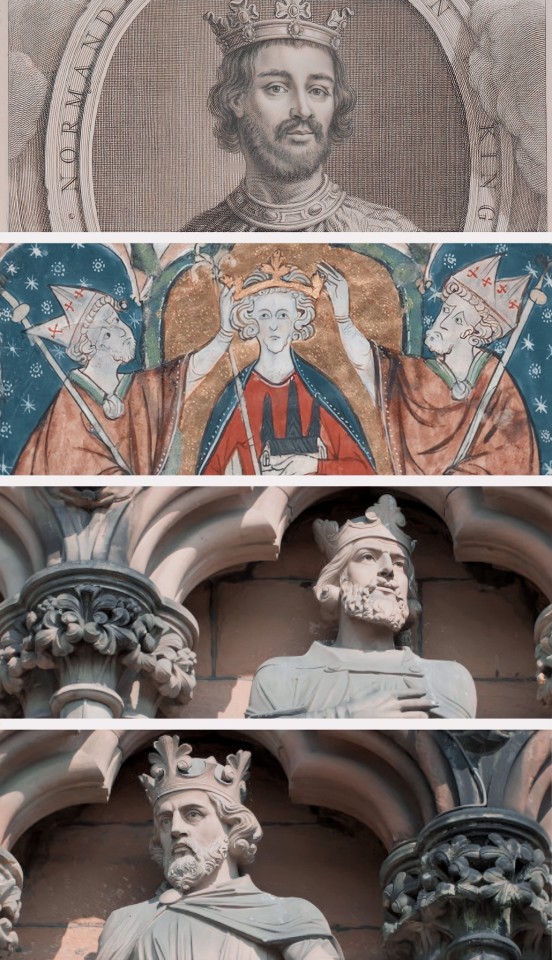
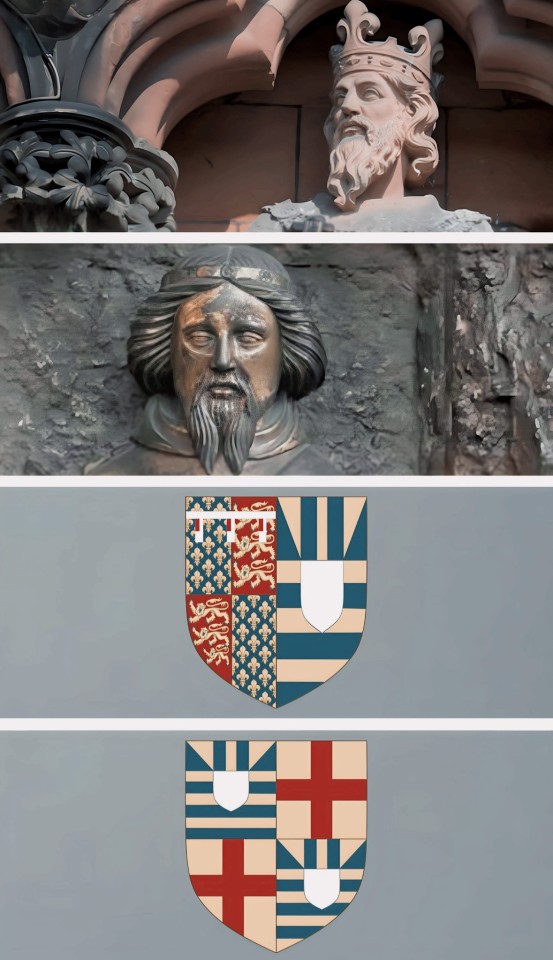


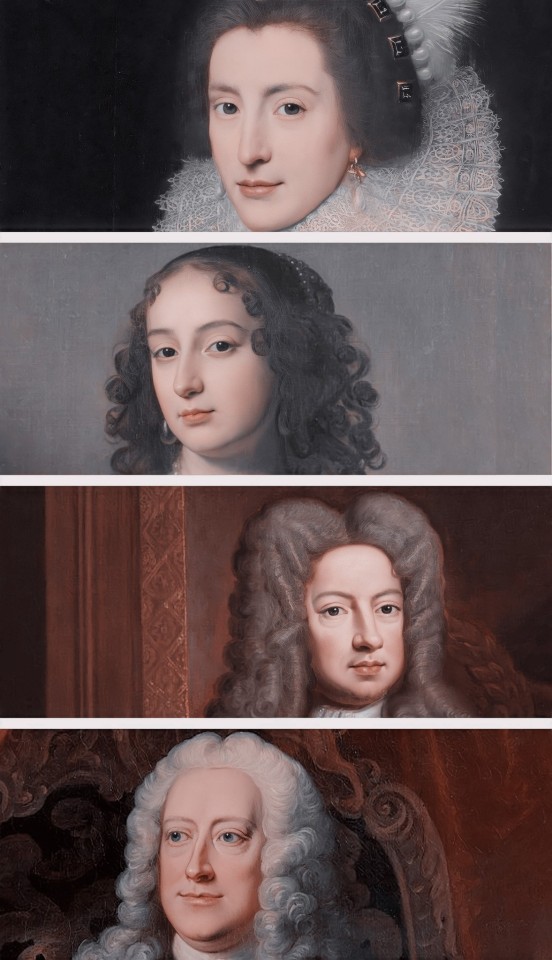
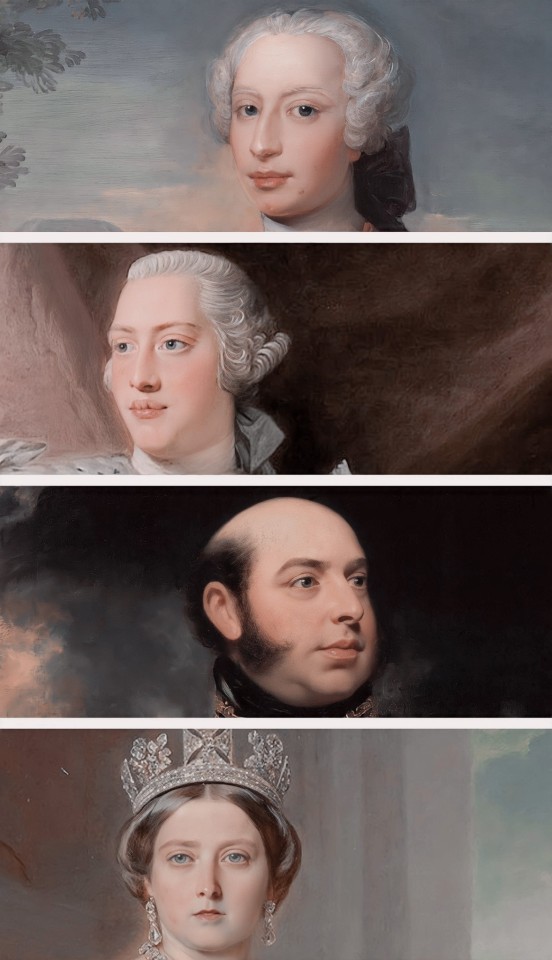


⋆ William, The Conqueror to William, The Prince of Wales ⋆
⤜ The Prince of Wales is William I's 24th Great-Grandson via his paternal grandmother's line.
William I of England
Henry I of England
Empress Matilda
Henry II of England
John of England
Henry III of England
Edward I of England
Edward II of England
Edward III of England
Lionel of Antwerp, Ist Duke of Clarence
Philippa Plantagenet, Vth Countess of Ulster
Roger Mortimer, IVth Earl of March
Anne Mortimer
Richard Plantagenet, IIIrd Duke of York
Edward IV of England
Elizabeth of York
Margaret Tudor
James V of Scotland
Mary Stewart, Queen of Scotland
James I of England
Elizabeth Stuart, Queen of Bohemia
Sophia, Electress of Hanover
George I of Great Britain
George II of Great Britain
Frederick, Prince of Wales
George III of the United Kingdom
Prince Edward Augustus, Duke of Kent and Strathearn
Victoria of the United Kingdom
Edward VII of the United Kingdom
George V of the United Kingdom
George VI of the United Kingdom
Elizabeth II of the United Kingdom
Charles III of the United Kingdom
William, The Prince of Wales
#royal line from william i#the british royal line#british royal family#british royals#royalty#royals#british royalty#brf#royal#royalty edit#mine.#historical royals#prince william#prince of wales#the prince of wales#william the conqueror#king edward iv#the plantagenets#house of york#house of plantagenet#house of tudor#house of stewart#house of stuart#king charles#king charles iii#queen elizabeth ii#queen victoria#house of normandy#mary queen of scots
168 notes
·
View notes

